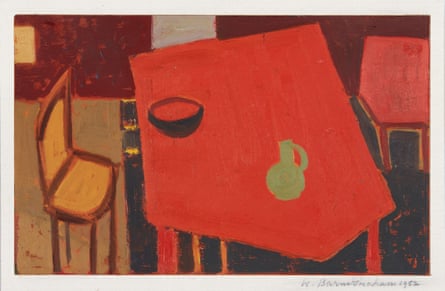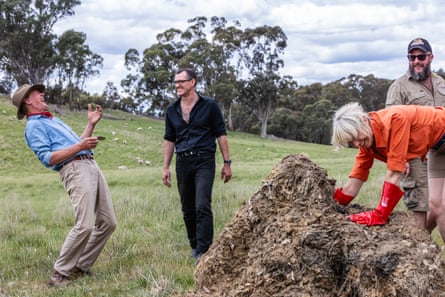A rogue preposition in the title betrays this film’s distinctive, dartingly eccentric idiom: not “of deeper things” but “to deeper things”. It is about neglected abstract painter Wilhelmina Barns-Graham, born in Scotland in 1912 and a resident of St Ives, whose landscapes she represented with endless curiosity and passion; she died in 2004. Film-maker Mark Cousins makes an idiosyncratic but compellingly persuasive case for this artist to be restored (or in fact introduced for the first time) to the pantheon of accepted greatness, with Tilda Swinton giving us Barns-Graham in voiceover.
The film grew out of a Barns-Graham installation Cousins curated in Edinburgh; the title is taken from her diaries, recording her ecstatic encounter with the Grindelwald glaciers in Switzerland in the late 1940s, whose forms and colours revolutionised her life and art, and took her vision into an intriguing space outside the purely abstract. She in fact called it “a sudden glimpse into deeper things”, which sounds a bit less eccentric. (It might have been more elegant to call it just A Sudden Glimpse, though that sounds misleadingly Hockneyesque.)
With a playful procedure of his own, bringing parts of himself into the frame (though not his face), Cousins muses over Barns-Graham’s identity and her creative brain; he also comments on photos of the older Barns-Graham, noting how to the general observer she might have seemed like a stereotypical old lady. Then he upends that condescension by showing us a picture of Barns-Graham in her prime: a blazingly beautiful, charismatic figure whose gaze meets the camera with a calm confidence. She perhaps has something grandly Bohemian and almost Bloomsbury-ish in her manner which went out of style; amusingly, Cousins shows us the later Barns-Graham with a group of older folk in the 1960s who were part of a religious pilgrimage, noting that they don’t look very cool or with-it – but he rather brilliantly suggests that her own later abstract canvases are like songs the Beatles made towards the end of their recording life. It’s a comparison that can’t be proved either way, but I think I see it, too.

One of Cousins’s starting points is personally coming into possession of a painting attributed to Barns-Graham, but whose signature looks wrong and which does not appear in the catalogues. Its forms look like an Escher design or like the grid illustrations in On Growth and Form by the mathematical biologist D’Arcy Wentworth Thompson, whose work Barns-Graham admired. The origin of Cousins’s painting might remain a mystery, but Barns-Graham’s own mesmeric colour-grid designs were perhaps an influence on Gerhard Richter. Later, Cousins shows us a succession of fascinating canvases by Barns-Graham and leaves it up to us to notice the debt to Picasso, although he explicitly denies her alleged resemblance to Barbara Hepworth; the work, he says, is “more primal than just the influence of art”.
Characteristically, Cousins injects a note of wayward invention; he imagines what Barns-Graham was thinking while flashing up some of her work onscreen, and even devises a kind of dialogue between her younger and older self. (He did something similar with Alfred Hitchcock.) Again, only Cousins could get away with it – and he does so because of his real, overwhelming rapture at her work; similar, perhaps, to the over-oxygenated euphoria he shows Barns-Graham experiencing in the glacier.
Source: theguardian.com





















